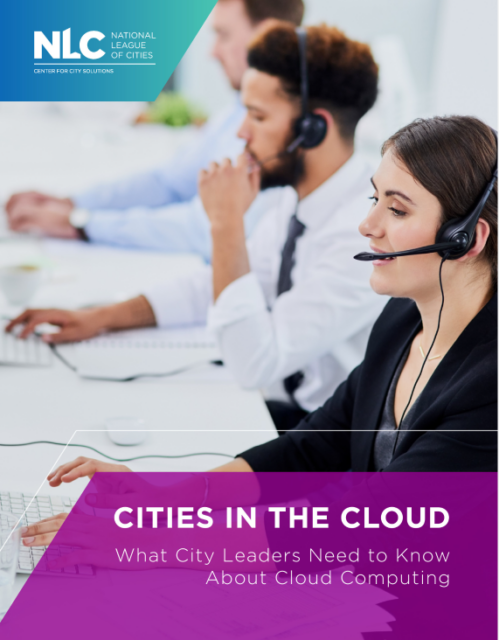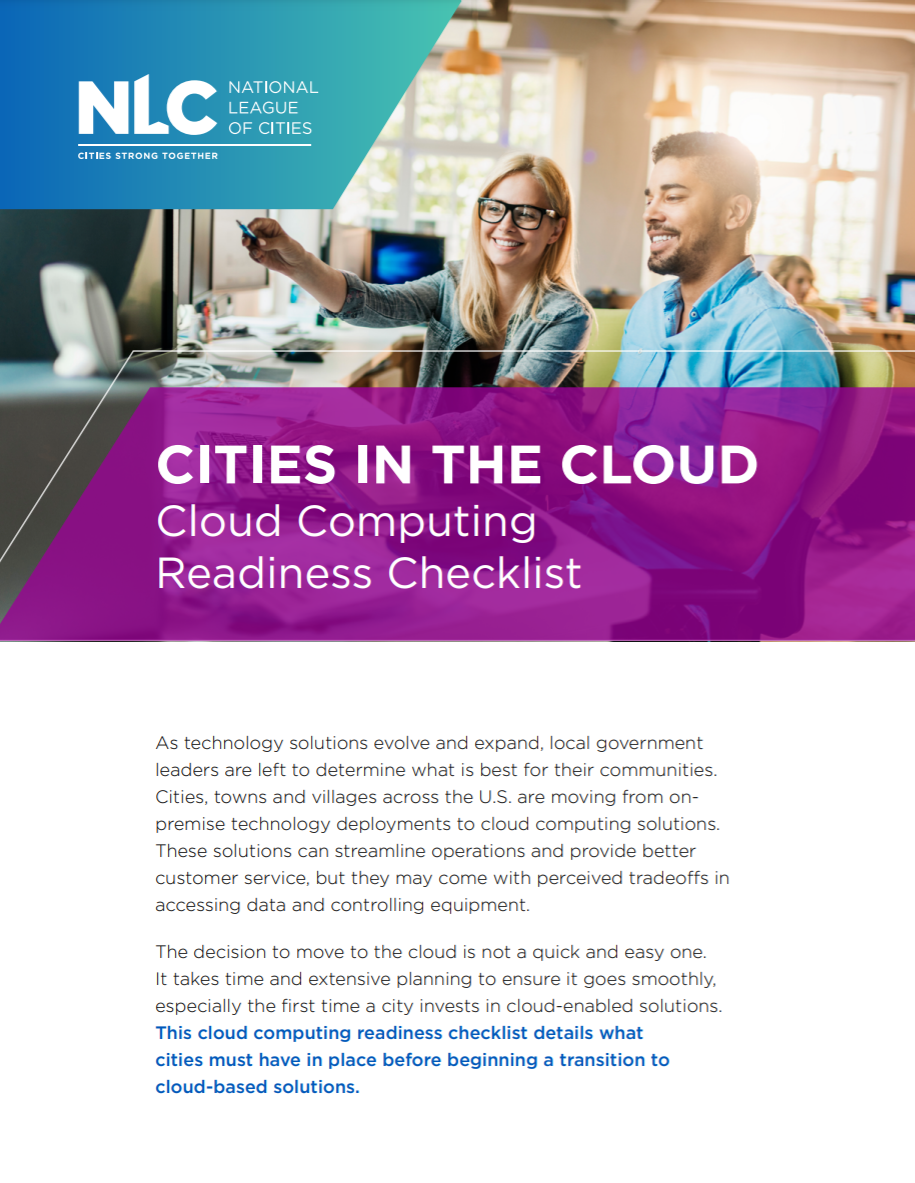As technology solutions evolve and expand, local government leaders are left to determine what works best for their communities. Previously, cities relied on on-premise technology solutions to power their operations. Under this approach, an organization keeps its own computing resources, managing them in-house or contracting with a third party to help maintain them. While some cities, towns and villages across the U.S. continue to invest in on-premise technology deployments, many others are moving to cloud computing solutions.
Cloud computing is a foundational change in how information technology resources are invented, developed, deployed, scaled, updated, maintained and paid for. Most simply, cloud computing is the use of computing resources (hardware and software) that deliver a service over a network, typically the internet. These cloud-based solutions can streamline operations and provide better customer service, but they may come with perceived tradeoffs in accessing data and controlling equipment.
This report provides city leaders the information they need to know about cloud computing to better understand whether it makes sense for their organization. It defines cloud computing, explores why now may be the right time to invest in cloud computing and profiles cities that are successfully navigating decision-making between on-premise and cloud solutions.
Complementary Resource: Cloud Computing Readiness Checklist
The decision to move to the cloud is not a quick and easy one. It takes time and extensive planning to ensure it goes smoothly, especially the first time a city invests in cloud-enabled solutions. This accompanying cloud readiness checklist details the requirements cities must have in place before transitioning to cloud-based solutions.











